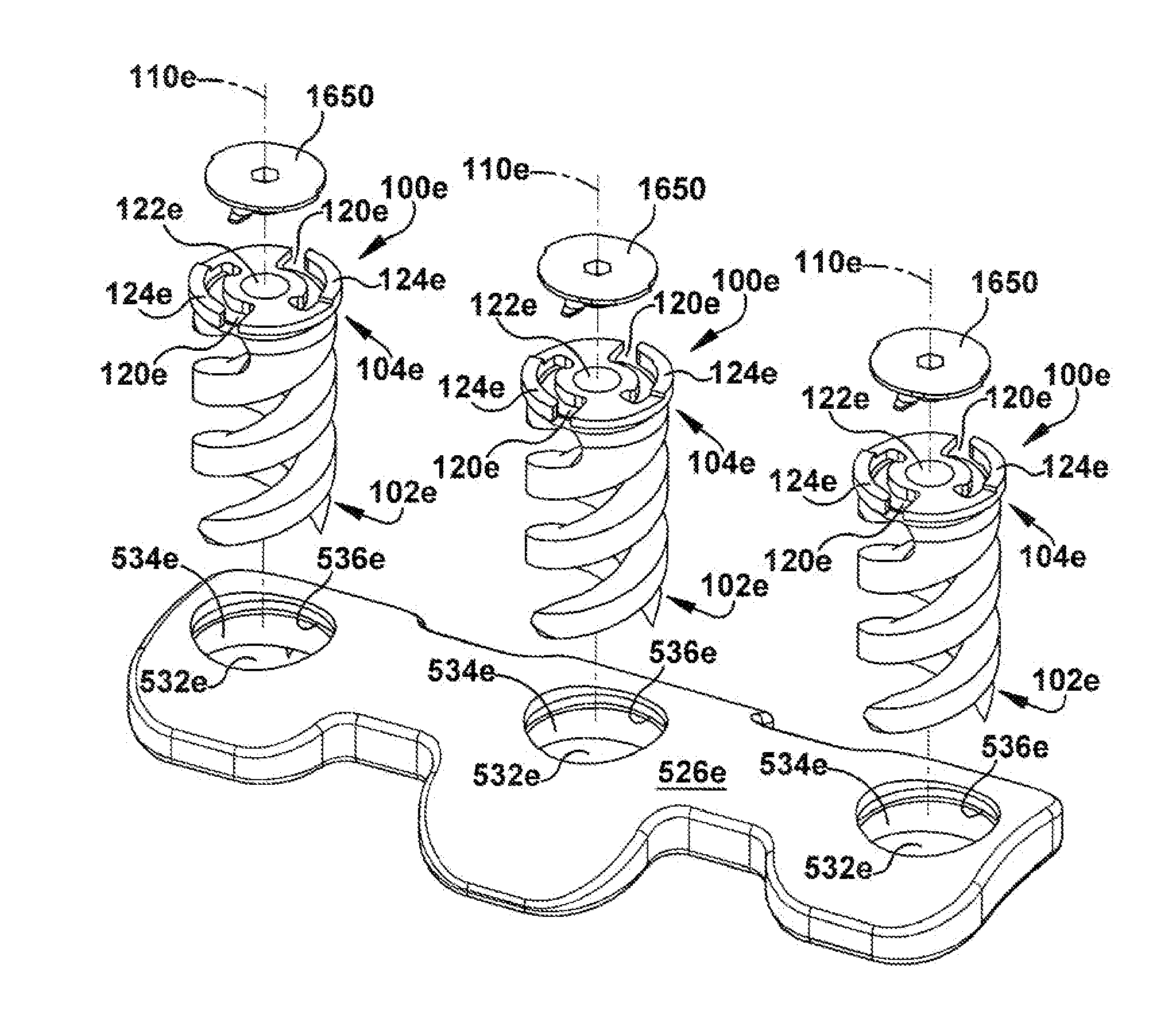Apparatus and method for body tissue fixation
a body tissue and applicator technology, applied in the field of applicator and method for body tissue fixation, can solve the problems of increasing the complexity of surgical procedures, affecting the effect of the surgical procedure, so as to prevent the displacement of the fixation devi
- Summary
- Abstract
- Description
- Claims
- Application Information
AI Technical Summary
Benefits of technology
Problems solved by technology
Method used
Image
Examples
first embodiment
[0065]In accordance with the present invention. FIGS. 1A, 1B, 2A, 2B, 3, 4, 5A, 5B, and 5C depict a body tissue fixation apparatus according to the present invention. Though the present invention is described herein as being used with bone, the fixation apparatus of any embodiment of the present invention may be used with any suitable body tissue, such as, but not limited to, bone, tendons, fascia, cartilage, and dentin. The term “bone” is used throughout this description merely for clarity and ease of reference and does not restrict the potential use of the present invention in any desired application.
[0066]The fixation apparatus includes a fixation device 100 shown in FIGS. 1A, 1B, 2A, and 2B, which includes a shank 102 and a head portion 104. The shank 102 is adapted for engagement with a bone member (not shown) or other body tissue. The shank 102 has spaced-apart first and second shank ends 106 and 108, respectively, separated along a longitudinal axis 110. The longitudinal axis...
third embodiment
[0083]The fixation device 100c shown in FIGS. 8, 9A, and 9B includes a deformable member 124c having a tip 138c protruding longitudinally toward the shank 102c. The plate 528c, shown in FIGS. 10A, 10B, and 10C, includes at least one serration 536c extending laterally with respect to the longitudinal axis 110c, with a plurality of serrations circumferentially spaced about a periphery of the fixation hole 532c to form a shelf-like array around the inner hole surface 534c, as depicted. As the fixation device 100c is inserted through the fixation hole 532c in the plate 528c, the deformable member 124c of the third embodiment deflects longitudinally in a ratcheting manner to engage at least one serration 536c.
sixth embodiment
[0084]The engagement between the deformable member 124c and at least one serration 536c will resist displacement of the fixation device 100c by backing out due to rotation in a direction opposite the insertion direction. Should a longitudinal displacement force be exerted upon the fixation device 100c, however, the deformable member 124c may be shifted longitudinally and lose engagement with the serration 536c. Therefore, a holddown feature, similar to those discussed with respect to the sixth embodiment below, may be provided to exert a longitudinal pressure upon at least a portion of the deformable member 124c and thereby maintain engagement between the deformable member and at least one serration 536c. This holddown feature can be readily designed by one of ordinary skill in the art. Suitable holddown features may include, for example, a tooth formed integrally with the fixation device 100c or a separate snap ring or cover plate, any of which could be adapted to engage with a str...
PUM
 Login to View More
Login to View More Abstract
Description
Claims
Application Information
 Login to View More
Login to View More - R&D
- Intellectual Property
- Life Sciences
- Materials
- Tech Scout
- Unparalleled Data Quality
- Higher Quality Content
- 60% Fewer Hallucinations
Browse by: Latest US Patents, China's latest patents, Technical Efficacy Thesaurus, Application Domain, Technology Topic, Popular Technical Reports.
© 2025 PatSnap. All rights reserved.Legal|Privacy policy|Modern Slavery Act Transparency Statement|Sitemap|About US| Contact US: help@patsnap.com



